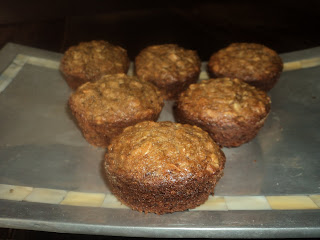
Rolled tomato leaves can be caused by several things. Many serious tomato diseases, including curly top, mosaic, fusarium and herbicide injury, begin with rolling leaves. But if your plants are green and no other symptoms appear, it’s probably plain old “tomato leaf roll”. It’s a temporary disorder resulting from excessively wet soil, especially after heavy rains, or bright sunshine on young plants. It doesn’t affect the plant’s growth. A normal crop of fruit is usually produced. The rolling typically disappears in a few days when the soil dries out. ‘Big Boy’, ‘Floramerica’ and ‘Beefsteak’ are affected most often. - Walter Reeves (http://www.walterreeves.com/gardening-q-and-a/tomato-leaf-roll/). Curling or rolling of tomato leaves can be caused by various factors including environmental stresses, viral infection and herbicide damage. To determine which factor is the culprit, it pays to take a close look at the plant(s). Which leaves are rolling – old leaves, new leaves, all leaves? What direction do the leaves roll – upward or downward? Are any other parts of the plant, including fruit, exhibiting symptoms?
The Extension Service of Clemson University writes (http://www.clemson.edu/extension/hgic/hot_topics/2008/05tomato_leaf_roll.html):
Physiological Leaf Roll: Excessive moisture and nitrogen, heat, drought, severe pruning, root damage and transplant shock are some of the environmental factors that can cause physiological leaf roll in tomatoes. Initial symptoms are usually apparent in the lower leaves with an upward cupping of leaflets followed by an inward lengthwise rolling of the leaflets toward the mid-vein. The affected leaves tend to become thickened and have a leathery texture, but retain a normal, healthy green color. Over time all of the leaves on the plant may be affected. Interestingly, vine tomato (indeterminate) varieties tend to exhibit physiological leaf roll more often than bush tomato (determinate) varieties. While this condition can occur at any time of the growing season, it usually occurs as spring weather shifts to summer. The good news is that the condition has minimal impact on tomato fruit production and plant growth. By properly hardening off tomato seedlings before planting in the garden, maintaining a consistent moisture level in the soil, and avoiding over fertilization, excessive pruning and root damage during cultivation, one can go a long way toward preventing tomato plants from developing this physiological problem.
Viral Infections: Some viral infections also cause leaf rolling in tomatoes. When tomato plants are infected with tomato yellow leaf curl virus (transmitted by whiteflies), new leaves become cupped and pale green in color. In addition the entire plant may exhibit stunted growth, yellowing leaf edges, purplish veins on the undersides of leaves and decline of fruit production. A second virus, tomato mosaic virus, causes rolling of leaves, but other symptoms, including mottled-coloring of leaves, small leaflets and internal browning of infected fruit, distinguish it from physiological or herbicide-induced leaf roll.
There is no treatment for virus-infected plants. Removal and destruction of plants is recommended. Since weeds often act as hosts to the viruses, controlling weeds around the garden can reduce virus transmission by insects. As some viruses are transmitted mechanically on garden tools, it also helps to disinfect tools that have come into contact with diseased plants.
Herbicide Damage: When tomato plants are exposed to the herbicide, 2,4-D, typical symptoms include downward rolling of leaves and twisted growth. In addition, stems may turn white and split; fruit may be deformed. Depending on the level of exposure, the plant may or may not survive.
Mississippi State University Extension Service (http://msucares.com/newsletters/pests/infobytes/19980624.htm)
Leaf roll isn't a disease that will spread from plant-to-plant, but it is what is referred to as a physiological disease. The condition has been common statewide and is more likely to happen in either very wet seasons or during periods of extended dryness.
Since the latter weather conditions have predominated in most areas of the state in recent weeks, leaf roll is probably tied in with dry soils. And as a result, tomato plants are showing an upward rolling of the leaflets of the older leaves.
At first, this rolling gives the leaflet a cupped appearance and it continues until the margins of the leaflets touch or even overlap each other. The rolled leaves are firm and leathery to the touch. One half to three-fourths of the foliage may be affected.
The growth of the leaf roll tomato plants is not noticeably checked and a normal crop if fruit is generally produced. In most cases, leaf roll occurs in combination with dry soils and when tomato plants are pruned severely. Also, leaf roll may occur following deep, close cultivation.
Some varieties are more sensitive to leaf roll than others, but none are completely resistant to this problem. The symptoms on tomatoes are very similar to those of a virus disease of potatoes that is known as leaf roll, but the leaf roll of tomatoes is not caused by virus infection.
Suggested control measures which may help avoid leaf roll in a fall crop include:
- Plant tomatoes in a well-drained soil.
- Fertilize according to soil test recommendations and do not over fertilize, particularly with nitrogen containing fertilizers.
- Avoid deep and close cultivation especially in dry weather.
- Maintain uniform soil moisture through irrigation, supplying an inch of water per week.
- Mulch tomatoes with plastic or organic material.
Infobytes newsletter was written by the late Dr. Frank Killebrew, Extension Specialist.
 One of the few most disappointing sitings on tomatoes is the tomato worm.
One of the few most disappointing sitings on tomatoes is the tomato worm.











